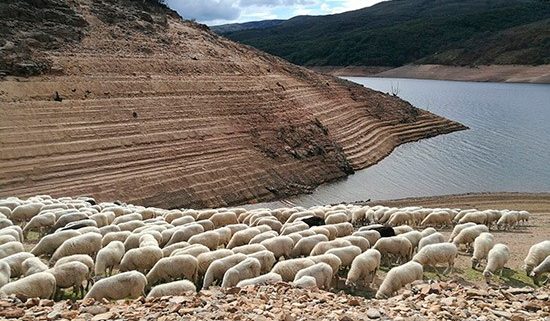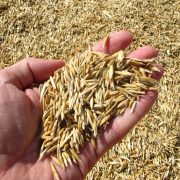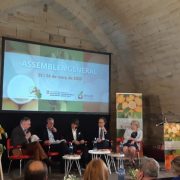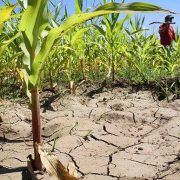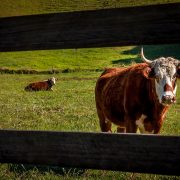UPA urges the Government to take urgent measures against a “historic” drought
The Union of Small Farmers (UPA) has urged the Government of Spain to adopt urgent measures against a drought that qualifies as “historic”. The shortage of rains since last autumn has led our country to an emergency situation that however, as denounced by the UPA agrarian organization, is “ignored” by the Government. Farmers and ranchers say they feel “abandoned and surprised” in the absence of a management plan for a crisis of great gravity.
The Union of Small Farmers and Cattlemen asks the Government for an emergency plan due to the drought situation facing Spain.
With the reserve of water at national level to 37.5%, and with basins in dramatic situation, such as the Segura, to 13.4%, the del Segura, to 25.2%, and the Duero, to 30% , UPA believes that the Government “can not continue ignoring this problem looking at the sky to see if it rains”
UPA has drawn a “dramatic” outlook, with the dry-land farmers planting the cereal in “absolutely dry” fields, an olive grove campaign that will be 20% less than the previous one, pasture land without pastures and irrigated crops that they see their situation in danger due to the lack of water to irrigate.
The UPA agrarian organization has called on the government to “take this problem seriously”, as it is very serious, and will not solve it alone.
The forecasts of all experts point to the fact that climate change is already increasing – and will do even more in the future – the frequency and severity of droughts
Given this panorama, from UPA it is indicated that “it calls seriously the attention that does not summon the Table of the Drought for months”.
This organization also criticizes that, in a year like this, the Government has not recovered the budget levels destined to agrarian insurance prior to the crisis, because they are the only hope of the sector in the face of this critical situation.
UPA believes that at least 265 million euros are necessary to ensure the survival of the insurance system
The drought is also noticeable in the forest fires that this year have devastated large area of Spain, being the worst year in terms of area burned since the 2012 campaign. Also the price of energy is breaking records due to the lack of capacity generation of hydroelectric power.
Report of effects of the drought by sector
September has been a very dry month, with an average rainfall over Spain of 15 mm, which is only 33% of the average of that month, which is 45 mm. Provisionally, it could be said that this September has been the driest so far in the 21st century. The month has been in the middle of the warmest September since 1965, specifically in position 27 of a total of 53 years.
Although AEMET has not yet published the weather data for the month of October, it can pointed out that it has been extremely dry and warm. Well above average in temperature and far below in precipitation.
The general situation of Spanish dryers can be summarized by saying that plantings are very late and those that are being made are totally dry. There is nothing of tempero and the sowings are made with an increase of the diesel consumption since to prepare the planting bed it is necessary to give more passes of tractor.
The uncertainty is total in the dry ones since it is happening the time of sowings of some species and varieties and the delay introduces elements of risk of facing the future
Sowings made in September and October of rapeseed are endangered by the absence of water in the soil.
Special chapter deserves the olive grove. In general we can say that the present harvest will be 20% shorter than the last one.
The lack of water in autumn is causing the olive does not fatten what it should and is very wrinkled. The sector is not only concerned about the lack of harvest this year, but the absence of water endangers the next season. If it does not rain soon and generously, we will find olive trees severely punished, with few reserves, which will condition the next year’s load.
In the specific case of table olives this season can be announced as catastrophic, with production reductions of up to 80% in areas of Extremadura
The lack of autumn has only aggravated the situation suffered by extensive cattle ranching in the summer. We can affirm that in most areas of Spain there is no grass available for cattle. This results in an increase in production costs derived from cattle feed. There are areas where the situation is more dramatic because the lack of food is compounded by the need to carry water in vats due to the absence of water troughs. Singularly this problem has worsened in the areas where this summer and autumn have been fires. There the absence of grass is total.
The irrigation is not saved from the dramatic picture that is being described. The two Castiles, Andalusia and the entire Mediterranean arch are the territories that have a worse situation. The dates we are on make the immediate concern focus on the south and east of Spain as the areas where watering continues.
If we do not have a generous winter in rain and snow, next spring will be terrible and will limit the irrigation endowments in many areas of Spain
In the southeast area all the water that is being produced by the desalination plants is being used for human consumption, nothing at risk. Given this scenario, the sector is wondering where is the electricity grid that allows the production of the Torrevieja desalination plant to go from 40 to 80 Hm3. They also ask why investments are not undertaken to expand the water production capacity of the Torrevieja, Águilas or Valdelentisco desalination plants and when their interconnection will take place. According to UPA, this is relevant “because we can not act on climate but on the ability to produce desalinated water that guarantees the survival of the fruit trees and that the vegetable crops of the southeast of Spain can be saved”.
The rainfall in this last hydrological year that has just ended (from October 1st to September 30th) has been, with a figure of 529 liters / m2, 18% lower in the peninsular Spain compared to the historical average.
The situation can be aggravated significantly if the predictions of the AEMET are confirmed and the next three months are generally warmer than normal and less rainy than the average.
Source: UPA




